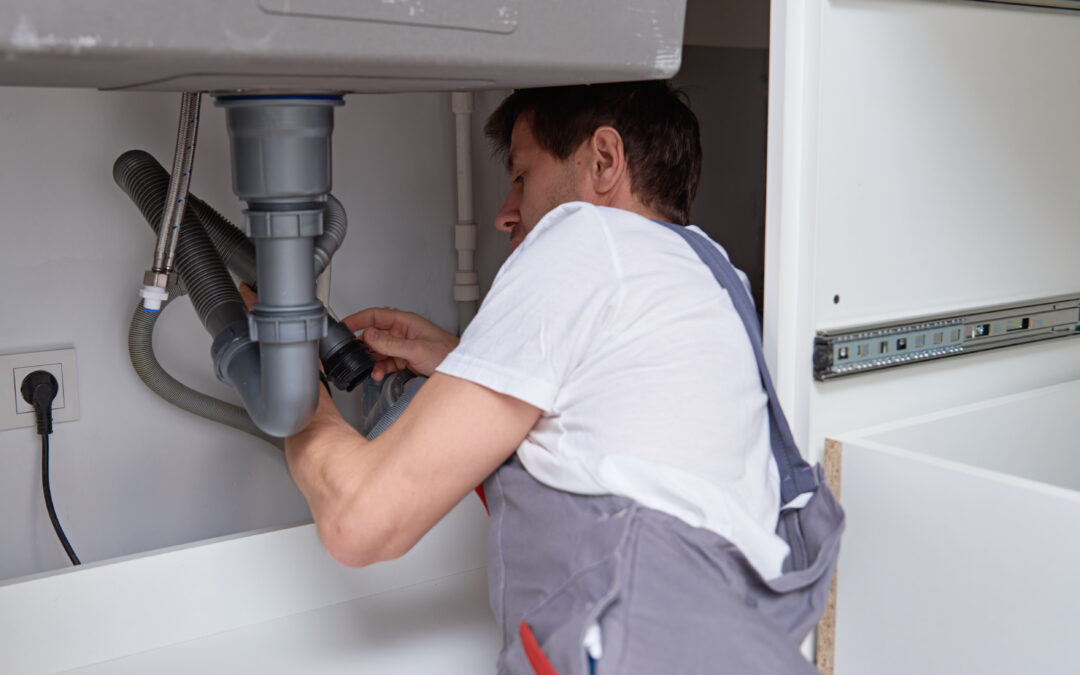Maintaining our home’s plumbing system is crucial for ensuring that everything runs smoothly. One often overlooked aspect of this maintenance is regular drain services. These services involve inspecting, cleaning, and sometimes even repairing our drains to keep them in top-notch condition.
Regular drain services bring several benefits that can save us from future headaches and costly repairs. From improving the performance of our drains to preventing serious clogs, taking care of our drains ensures that water flows smoothly and efficiently. Proper drain maintenance helps avoid the buildup of debris that can lead to blockages and potential plumbing emergencies.
Moreover, routine drain services contribute to the overall longevity of our plumbing system. By keeping our pipes clear and functional, we reduce the wear and tear that can result in leaks or burst pipes over time. Additionally, professional drain inspections can help detect other underlying plumbing issues, allowing us to address them early before they become significant problems. By investing in regular drain services, we protect our home’s plumbing system and ensure it continues to serve us well for years to come.
Shut Off the Water Supply Immediately
The first thing we should do when a pipe bursts is to shut off the water supply. This step is crucial in stopping the water flow and preventing further flooding. Locate the main water shut-off valve, which is typically found near the water meter or where the main water line enters the house. Turn this valve clockwise to shut off the water supply.
Knowing where this valve is located before an emergency occurs is vital. It’s also a good idea to label it for easy identification and ensure that everyone in the household knows its location. If the burst pipe is in a specific area, we might also use localized shut-off valves, but turning off the main valve is usually the safest bet in a sudden emergency.
After shutting off the water, open the faucets in our home to drain any remaining water from the pipes. This helps relieve pressure and minimizes further leakage. This first step is key to controlling the immediate situation and sets the stage for the next critical actions.
Drain the Pipes to Minimize Damage
Once the water is shut off, the next step is to drain the pipes to reduce the risk of water damage. Start by turning on all the cold water faucets in the house. This will allow the water to drain out of the system, reducing pressure and minimizing leaks. Don’t forget to flush the toilets to release any water in the system.
After the cold water is drained, turn off the water heater and then open the hot water faucets. Draining the pipes completely helps ensure there is no water left that could continue to leak from the burst pipe. If the weather is cold, this step is especially important because it helps prevent the remaining water from freezing, which could cause additional damage.
While the water is draining, use towels, buckets, or a wet/dry vacuum to remove any standing water from the affected area. Quick action can prevent extensive water damage to floors, walls, and furniture. Taking these steps promptly not only protects our home but also makes it easier for the plumber to assess and repair the damage once they arrive.
Locate and Assess the Burst Pipe
Once the water has been shut off and the pipes are drained, it’s time to locate the burst pipe. This step is crucial for understanding the extent of the damage and preparing for repairs. Look for signs of water damage, such as wet spots on walls, ceilings, or floors. A puddle of water is usually a clear indication of where the burst pipe is located.
If the burst pipe is not immediately visible, inspect areas where pipes are commonly found, such as basements, crawl spaces, and under sinks. Take note of any unusual sounds, like hissing or gurgling, which can help pinpoint the location.
Examining the burst pipe closely can also give us an idea of what might have caused the problem. Whether it’s corrosion, freezing, or high water pressure, identifying the cause can help prevent future incidents. Carefully documenting the damage with photos can be helpful later on, especially if we need to file an insurance claim.
Call a Professional Plumber for Repairs
After locating and assessing the burst pipe, the next crucial step is to call a professional plumber. Attempting to fix a burst pipe on our own can lead to more damage if not done correctly. A skilled plumber has the expertise and tools to repair or replace the damaged section of the pipe safely and efficiently.
When contacting a plumber, provide them with detailed information about the burst pipe, including its location and the steps we’ve already taken to mitigate the damage. This helps them prepare and bring the necessary tools and materials for the job.
While waiting for the plumber to arrive, continue to remove any standing water and keep the area as dry as possible. If it’s cold outside, keep the temperature in the house warm to help prevent any other pipes from freezing and bursting.
Conclusion
Handling a burst pipe quickly and efficiently is crucial in minimizing water damage and keeping our home safe. By shutting off the water supply, draining the pipes, locating and assessing the damage, and calling a professional plumber, we can manage this stressful situation effectively. Each step is essential for controlling the immediate problem and ensuring that the necessary repairs are made promptly.
Taking these actions not only helps protect our home and belongings from water damage but also prevents more significant issues from developing. A well-maintained plumbing system is vital to our home’s overall safety and comfort.
If you face a plumbing emergency or need assistance with repairs, don’t hesitate to contact Shoreway Plumbing. Our expert team is ready to help you with all your plumbing needs. Call Shoreway Plumbing today for reliable and prompt
local drain cleaning services!


